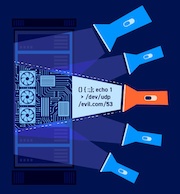- Log in to your account and access the user account page.
- Observe that the response doesn't have any anti-caching headers.
-
Smuggle a request to fetch the API key:
POST / HTTP/1.1 Host: YOUR-LAB-ID.web-security-academy.net Content-Type: application/x-www-form-urlencoded Content-Length: 42 Transfer-Encoding: chunked 0 GET /my-account HTTP/1.1 X-Ignore: X - Repeat this request a few times, then load the home page in an incognito browser window.
- Use the Search function on the Burp menu to see if the phrase "Your API Key" has appeared in any static resources. If it hasn't, repeat the POST requests, force-reload the browser window, and re-run the search.
- Submit the victim's API key as the lab solution.
Lab: Exploiting HTTP request smuggling to perform web cache deception
This lab involves a front-end and back-end server, and the front-end server doesn't support chunked encoding. The front-end server is caching static resources.
To solve the lab, perform a request smuggling attack such that the next user's request causes their API key to be saved in the cache. Then retrieve the victim user's API key from the cache and submit it as the lab solution. You will need to wait for 30 seconds from accessing the lab before attempting to trick the victim into caching their API key.
You can log in to your own account using the following credentials: wiener:peter
Notes
- Although the lab supports HTTP/2, the intended solution requires techniques that are only possible in HTTP/1. You can manually switch protocols in Burp Repeater from the Request attributes section of the Inspector panel.
- The lab simulates the activity of a victim user. Every few POST requests that you make to the lab, the victim user will make their own request. You might need to repeat your attack a few times to ensure that the victim user's request occurs as required.
Tip
Manually fixing the length fields in request smuggling attacks can be tricky. Our HTTP Request Smuggler Burp extension was designed to help. You can install it via the BApp Store.


